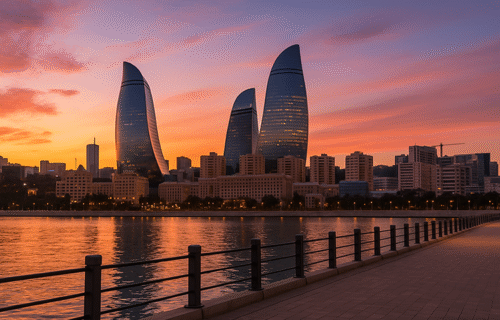The International Monetary Fund (IMF) has revised its economic outlook for the Gulf Cooperation Council (GCC), forecasting stronger growth through 2025 and 2026 as oil production rises and non-oil sectors continue to expand. The findings, published in the IMF’s October 2025 Regional Economic Outlook and summarised by Kamco Invest, point to broad-based resilience across Middle Eastern economies despite global trade disruptions and ongoing geopolitical uncertainty.
The IMF now expects GCC real GDP growth to reach 3.9% in 2025, an increase of 0.9 percentage points from its May projection, and 4.3% in 2026, with all six member states receiving upgrades. Oil GDP is forecast to grow by 4.2% in 2025, up from 1.7% previously, as OPEC+ producers unwind voluntary output cuts earlier than anticipated. Non-oil GDP growth is projected at 3.8% in 2025 and 3.6% in 2026, driven by ongoing diversification programmes and private-sector expansion.
The report notes that GCC economies have so far avoided significant fallout from U.S. tariffs and global supply-chain disruptions. Domestic demand, fuelled by government investment in infrastructure, tourism, and technology, has helped cushion the region against external shocks. The UAE is expected to lead Gulf growth in 2025 at 4.8%, followed by Saudi Arabia at 4.0% and Kuwait at 2.6%.
Oil markets remain central to the regional outlook. The removal of OPEC+ voluntary production cuts — amounting to roughly 2.2 million barrels per day introduced in late 2023 — added close to one million barrels per day of GCC output between February and June 2025. The IMF warns, however, that a faster-than-expected supply rebound could pressure prices below the current baseline of USD 69 per barrel for 2025 and USD 66 per barrel for 2026.
Inflation across the GCC is forecast to remain subdued, averaging 1.7% in 2025 and 2.0% in 2026, well below central bank targets. This compares with double-digit inflation across parts of the wider MENA region, where energy and food costs remain elevated.
Fiscal conditions are also improving. The IMF now projects the GCC to post a fiscal surplus of 0.8% of GDP in 2025 and 0.9% in 2026, reversing earlier expectations of a small deficit. The region’s current account surplus has been revised up to 4.9% of GDP for 2025 and 4.3% for 2026, reflecting firmer oil receipts and restrained spending. Kuwait is set to record the highest surplus at 26.5% of GDP, followed by the UAE at 13.2%.
Globally, the IMF foresees growth in 2025 remaining below pre-tariff averages, with continued headwinds from trade barriers and financial-market volatility. The Fund warns that a sudden tightening of global financial conditions could undermine household wealth and consumption, posing a risk to the otherwise stable regional outlook.
For MENA oil importers, lower energy prices, tourism recovery, and steady remittance inflows are expected to support moderate expansion. Overall, the IMF upgraded the MENA region’s growth forecast to 3.3% for 2025 and 3.7% for 2026, emphasising that resilience across both oil exporters and importers remains the defining feature of the region’s economic recovery.
Source: GCC
